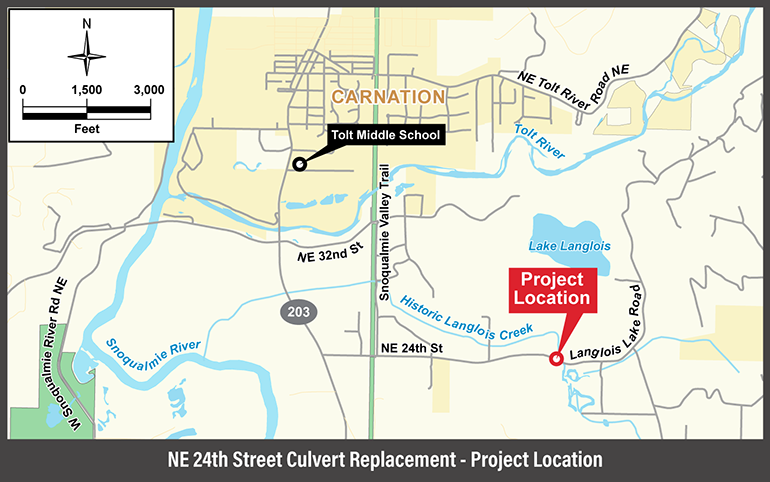NE 24th Street Culvert Replacement Project
Construction completed in September 2025.
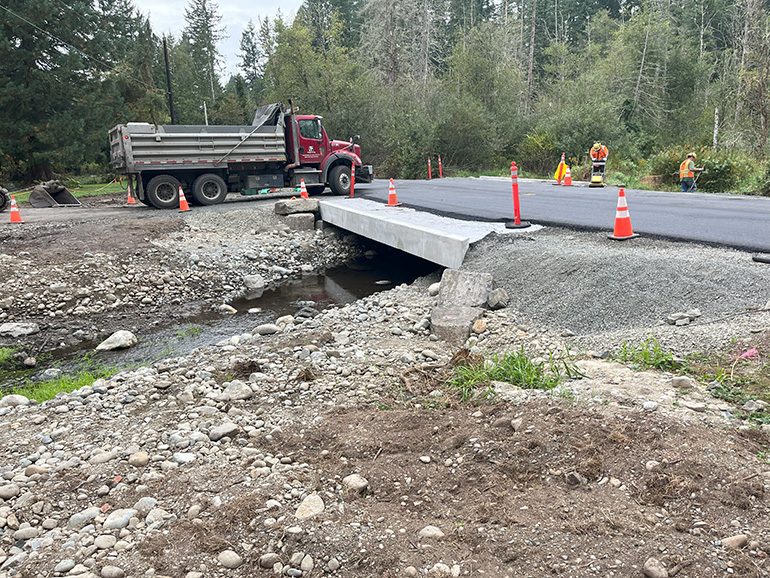
NE 24th Street has been paved with fresh smooth asphalt above the new concrete box culvert.
Status update
September 15, 2025
We understand the impact of construction on a sole access road and constructed the new culvert as fast as possible. Thank you to the community for your patience during construction. By acting now, we can avoid a much larger emergency closure later.
Crews may return occasionally this fall for punch list items and to seed the area.
Construction for this project began on July 11, 2025, and was completed on September 15, 2025.
Project overview
Historic Langlois Creek near Carnation, WA passes under NE 24th Street in a narrow, corrugated metal pipe culvert. Because the pipe was too small, it caused flooding in the area and the water in the pipe moved too quickly for fish. The County removed the existing pipe and built a much larger 18-foot-wide fish passable concrete box culvert.
During construction, travelers used a temporary gravel bypass lane and wooden bridge to keep vehicles, bicycles, and pedestrians moving. The bypass lane was necessary because NE 24th Street is a sole access road, and this ensured two-way traffic could come and go from the neighborhood.
Project location
This project is located on NE 24th Street southeast of Carnation, WA. View larger (250KB)
Why did King County replace this culvert?
We replaced the worn out, narrow culvert because it caused flooding and was a fish passage barrier.
The original pipe culvert was too small and often flooded when it rains. It was also considered a fish passage barrier for two main reasons:
- It was too small for the volume of water that passes through it. As a result, the water is pushed through extremely fast making it nearly impossible for fish to swim in it.
- At times, the water inside the existing culvert was too shallow and the bottom of the culvert was located too high above the stream bed for fish to jump into the culvert so they can continue to swim upstream.
Fish have a very difficult time swimming through extremely swift water. They also have a lot of trouble jumping up and through a pipe with very little water in it.
Benefits of concrete box culverts
A box culvert is flat and wide with streambed gravels placed in the bottom to simulate an actual stream allowing fish to move up and downstream easily. The new concrete box culvert will make it much easier for fish to pass under the roadway and continue their migration.
Box culverts can accommodate a much larger volume of water.
They are designed to simulate a natural stream and allow consistent, gentle water flow under the road.
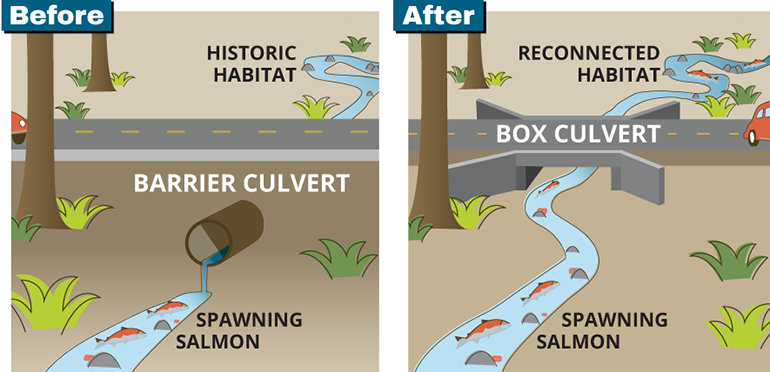
Fish have a hard time migrating upstream if there is not enough water in the culvert, or if the culvert is too high above the stream. The box culvert helps make it easier for fish to pass underneath the road. (Image courtesy of King County Fish Passage Program)
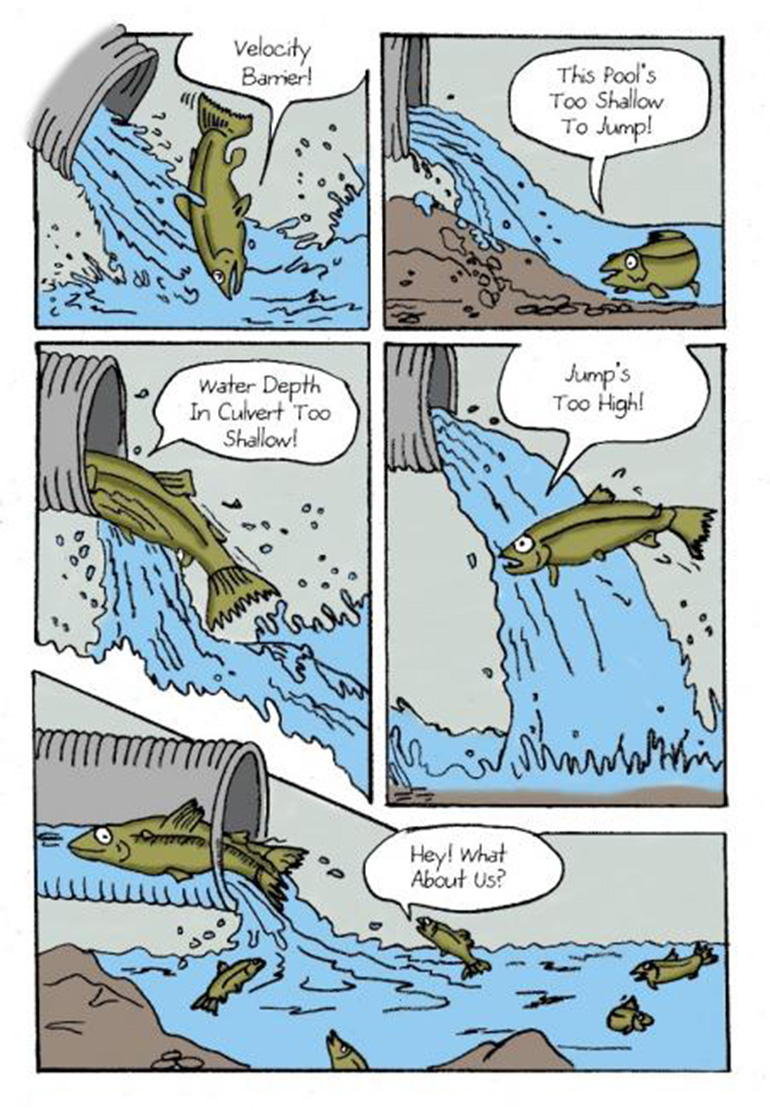
Culverts may block fish migration because the water flow is too swift, too shallow, or has a waterfall into or out of the culvert. The new box culvert is designed to have enough water running through it at a natural pace, just like a real stream. (Image courtesy of WSDOT Fish Passage Program).
Budget and funding sources
This project swas funded by the Flood Control District and the design and construction budget was $3 million.
Frequently asked questions
A fish passage barrier is anything that hinders fish from moving upstream or downstream.
Most fish barriers in unincorporated King County are round metal pipes (culverts) that channel streams and water underneath the road. Many of these culverts were installed between 30 and 100 years ago. These older metal culverts allow water to flow but are so narrow and steep that they prevent fish from swimming through them.
Metal pipe culverts may block fish migration because the water flow is too swift, too shallow, or has a waterfall into or out of the culvert.
The ability of trout, salmon, and steelhead to swim upstream to their traditional spawning grounds is vital to their recovery across Washington and King County. Deteriorating culverts and other barriers block fish passage and undermine the state and county recovery efforts.
One of the most effective ways to ensure the survival of native fish – and the southern resident orcas that rely on them as a food source – is to remove barriers to their habitat.
Photos

Using a large crane, crews carefully lift and place prefabricated panels of the bottom and sides of the new box culvert into place.
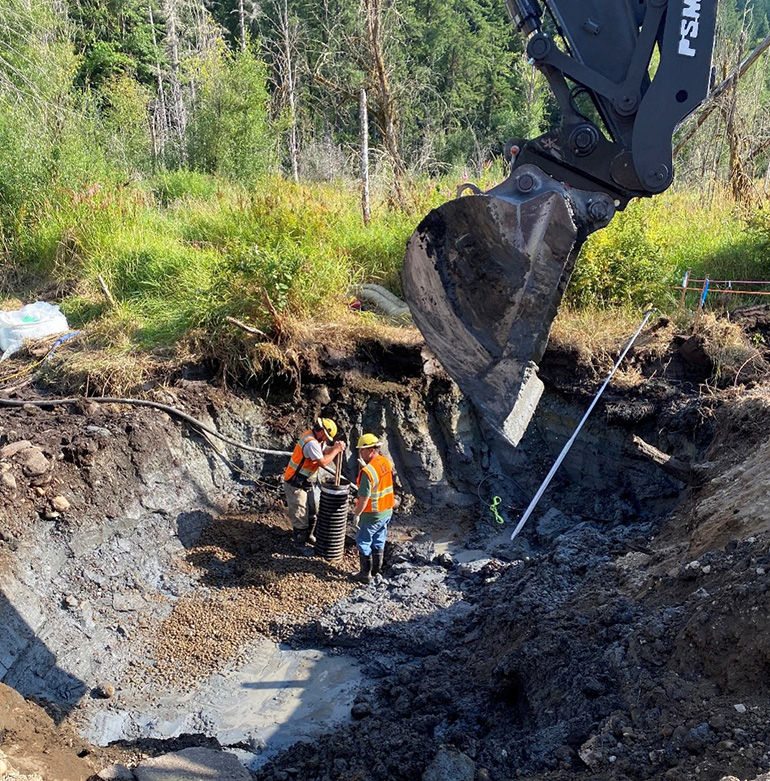
Crews are digging a deep pit in the earth to make space for the new, much larger concrete box culvert.
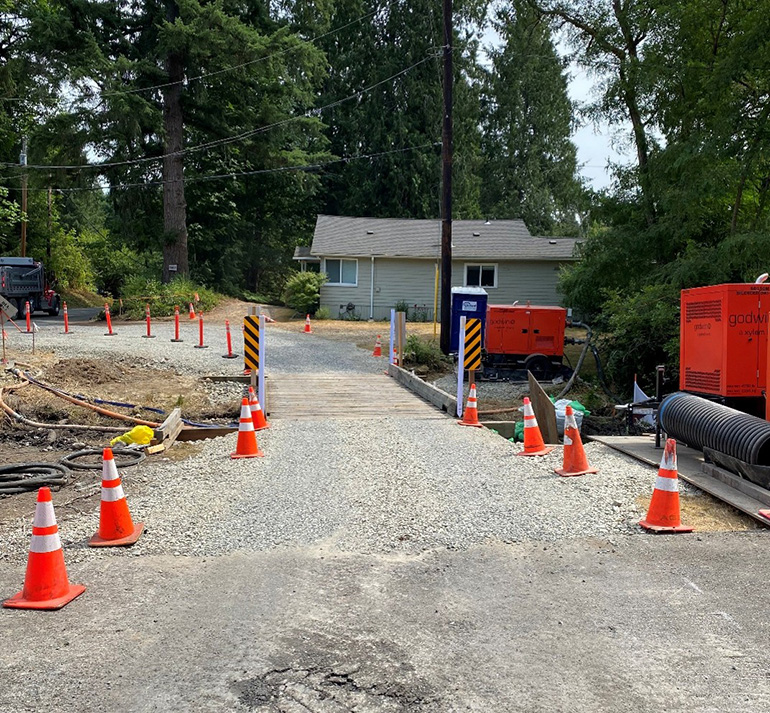
Crews built a temporary one lane gravel bypass road which includes a wooden bridge. This allows two-way traffic to continue to use access the neighborhood.

Crews are replacing an old three-and-a-half-foot corrugated metal pipe under the road with an 18-foot-wide fish passable concrete box culvert.

The road has been repaired above the pipe many times. Here is a photo from 2016 before the area was repaved. You can see the patching that was needed because the pipe is unstable and causes the road above it to shift.

Water flows from an aging metal culvert under NE 24th Street. This pipe will be replaced with a much larger concrete box culvert to improve drainage and prevent future road damage.

The fast flow of water through the existing metal pipe creates a challenge for fish.

 Translate
Translate
